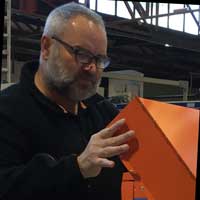
John Rakic
John Rakic is the proud Owner and Managing Director of Trafalgar Group with over 20 years of experience in the passive fire industry.
Holy shit, this whole passive fire protection is more than just holes in walls!
This is not Dr Zeus, but Doc PASSIVE at work here…
- What is the secret to getting the correct FRL for service penetrations
- Have we overcomplicated things?
- Why is it OK on one project and not the next?
- Am I missing something?
For 30 years, I seem to hear myself saying the same things, over, and over again:
Yes, you do need to provide a fire stop where your services pass through a fire barrier.
No, its just not as simple as shoving some fire pillows in the hole around the pipe.
The fire sealant is intumescent and that means it swells up in fire conditions to STOP the fire burning through when the cables melt.
No fire mortar is not just concrete, if you filled the hole with just concrete it would shrink and fall out very quickly in a fire.
No, even a 20mm conduit or plastic pipe does need to be fire stopped!
To be honest, I could have written probably hundreds of little sentences like this here, and these were the first few that just came to mind.
This is just a snippet of the full article. To read the entire article, download the pdf today.
Table of Contents
So, What Is This Article About?
This article is trying to help those who work in construction gain a better understanding of how to get passive fire protection right the FIRST time.
Whether you are the builder, plumber, electrician, mechanical services contractor or anyone involved with building services, this should be a useful guide to understanding the BASIC questions you need to ask yourself to get a compliant, as installed FRL for a service, or a cluster of services, that need to run through a wall or floor required to have an FRL.
If you do not know what an FRL is, you SHOULD; it’s the legal term for a required “fire rating” in our buildings. I am not going to explain it in this article.
No foresight and lack of co-ordination of trades
Before I provide a cheat sheet to assist you all hopefully have the tools and knowledge to get it right the first time, I will say that ever since I got into the so called “Passive Fire Protection” industry in 1992, and being a qualified Engineer, I struggled to understand why this industry sector is so guarded, secretive and insular.
Everyone tries to keep things a secret, and put a big BLACK BOX around what can and should be a relatively simple thing; that is providing a “Fire Stopping” SYSTEM, to ensure that all openings in fire barriers are “filled”, “fully-closed” or “protected” so that in a real fire, that the fire will not pass from one-side of the fire barrier to the other-side.
The biggest problem if I can only nominate only one, is that more often than not, passive fire protection is sadly an after-thought.
Too often, as a leading manufacturer and supplier of products for passive fire protection, our technical team, are asked to provide advice to “fire stop” messy and complicated openings, with a plethora of mixed services, all in close proximity to one another.
This all too common scenario results in expensive and complicated solutions, that if only some forsight had only been there, and if the builder had applied more control as to what trades can run what services where, would have been quick, cheaper and much simpler to do.
The Basic Building Blocks for First Time Compliance
Let’s work through a cheat sheet or check list for you all.
And to think; in 2001, like many others, I got paid handsomely as a consultant to provide this type of advice… Today it’s FREE, please take the time to read and understand it, but most importantly, IMPLEMENT IT on your projects. PLEASE, PLEASE, & one more PLEASE!
The questions I ask myself instinctively, and in this particular order, are:
1. Have you made the hole yet, and are the service run?
As I said earlier, sadly in most instances, when people reach out to our Trafalgar Technical team, the answer is YES; the holes are already made, in fact there is about 150 of them; and yes, all of the services are there already. We need to complete our works on this building by tomorrow, so we need URGENT technical help. My mate said you guys helped him on his project recently hence why I called.
Sadly, it’s not just a matter of shoving the same something in each hole; it will probably require a different fix for each opening!
Can you come over this evening and fix it all for us?
We only manufacture and sell products and we own the fire tested SYSTEMS for our products.
Really? You don’t do installation? You only sell products? Can you tell me who can help us? We need them on-site tonight!
If you involve the manufacturer BEFORE you make the holes and run the services; YES, this means to do some planning, you will be pleasantly surprised how much faster, cheaper and easier the whole exercise can be.
Those who, for example, use cast-in situ products, like our Trafalgar FyreCHOKE fire collars (ideal for plastic pipes in floor slabs), , our FyreBOX Cast-in unit for large multi-service opening in floor slabs, and last but not least, our FyreBOX Slab Mount, as another example, whereby you can do the fire stopping BEFORE the wall is even built. These products provide HUGE benefits. They make the correct size opening in the fire barrier for you, and already incorporate the intumescent fire stopping materials.
Trafalgar FyreCHOKE cast-in situ fire collars; either high cast or low cast models are often used to make provision for the proposed plastic pipe penetrations in floor slabs
– simply nail them onto formwork in the correct position, pour the concrete and the opening is made for the plastic pipe, complete with fire stopping included.
Trafalgar’s patent cast-in FyreBOX units getting ready to be covered in concrete and allowing the correct opening size to be made in a floor slab without the need for an opening to be made by the formwork contractor the conventional way.
The patented Trafalgar FyreBOX Slab Mount; this was installed prior to Hebel wall being erected, not only making the hole, but allowing services to be run BEFORE the wall is in place; please note – one trade, electrical was late, so final fire stopping using the graphite impregnated inserts and FyreWRAP will be done when services are complete.
I bet many people reading this, will be pleasantly surprised to see how neat and easy it can be done!!!!
2. What is the fire barrier and the FRL required?
Each type of fire barrier requires specific fire testing to establish what FRL can be achieved.
In turn, all openings in each type of fire barrier, also need specific fire testing to verify that the FRL can be maintained.
Openings include fire doors, fire rated access panels, ducts and fire dampers, movement or control joints, and of course openings and holes for services.
It makes good sense then, that one of the first series of questions need to be:
What is the fire barrier?
- Horizontal floor slab?
- Fire rated ceiling?
- Fire rated services or riser shaft?
- Fire wall?
- Plasterboard, Block work, tilt up concrete, Speedpanel, Hebel, Pronto panel etc etc?
What is the FRL?
Examples might include:
- -/60/60?
- -/90/90?
- -/120/120?
- 60 minute RISF ceiling where a ceiling cavity is present?
Once we know this information we have the baseline for compliance.
3. What is the hole size and shape in the fire barrier?
Why is this important?
The opening size and shape will be the first variable needed to select an appropriate fire stopping product.
Is the opening small, medium or large?
Is it round, square or has it been bashed through the wall and irregular in shape?
4. What service or services passing through the opening?
Together with question 3, above, knowing the opening sizes & shapes, together with the service or services passing through each opening, will allow us to select an as fire tested SYSTEM or configuration which allows the FRL to be maintained.
Let’s look at some opening and service configurations to get a better understanding of how this helps us select a product and then verify if there is a fire tested SYSTEM for each example. I will use Trafalgar FyreSTOP product names to provide examples as I most familiar and confident with my own products and fire tested SYSTEMS.


